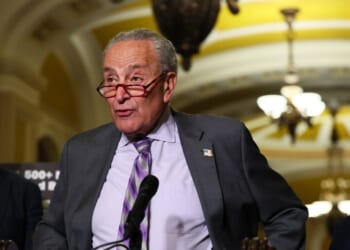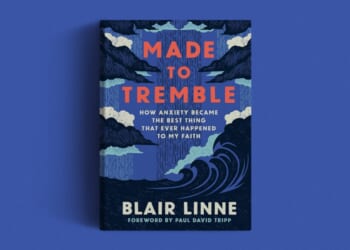
As delegates from 183 countries gather in Geneva for the 11th Conference of the Parties (COP11) to the World Health Organization’s Framework Convention on Tobacco Control, the global health treaty marks its twentieth year. But while the FCTC was created to confront the devastation caused by combustible tobacco, it has drifted far from that mission. What began as a coordinated effort to reduce smoking has hardened into a bureaucracy that refuses to acknowledge modern science, adult consumer demand, or the well-established continuum of risk that exists across nicotine products.
That denialism mirrors the U.S. Food and Drug Administration’s approach under the 2009 Tobacco Control Act. Although the WHO and FDA operate in different political contexts, both are clinging to regulatory frameworks built for a cigarette-dominated world. And the results are identical: outdated systems that protect cigarettes, block innovation, and delay global progress toward a smoke-free future.
The FCTC and TCA were adopted before the rise of e-cigarettes, heated tobacco, and oral nicotine. Instead of evolving with technology and consumer behavior, both institutions doubled down on nicotine alarmism. WHO officials routinely exaggerate the risks of nicotine while ignoring a fundamental scientific reality recognized for decades: it is combustion – not nicotine – that causes nearly all smoking-related disease.
This is not a revelation. Combustible cigarettes contain hundreds of ingredients that, when burned, generate more than 7,000 chemicals, including 69 known carcinogens. Nearly 50 years ago, Michael Russell summarized the truth: “People smoke for the nicotine, but die from the tar.” Since then, researchers and adult consumers have spent decades searching for ways to separate nicotine from combustion, leading to the development of a range of significantly lower-risk products.
These products fall along a clear continuum of risk. Cigarettes sit at the deadliest end. Products that reduce but do not eliminate smoke – like heated tobacco – cut exposure. And smoke-free options such as NRTs, oral nicotine, and vaping occupy the lowest-risk end of the spectrum. Nearly twenty years of real-world data from multiple countries show that where these alternatives are available, smoking declines far more rapidly than under the WHO’s preferred strategy of high taxes, advertising bans, and prohibition.
Yet the WHO and FDA remain fixated on youth, treating the nicotine landscape as if it still belongs to Big Tobacco circa 1995. This fixation ignores the 1.2 billion adults who still smoke worldwide and the more than 30 million Americans who were smoking in 2023. It also ignores the data: youth vaping has been declining sharply for years. In the United States, youth vaping is down 70% since 2019. Only 5.9% of middle and high school students reported current use in 2024, and most report vaping out of curiosity or to cope with stress – not because of flavors or nicotine dependence.
Meanwhile, youth and young adult smoking has nearly collapsed. In the United States, smoking among 18- to 24-year-olds has fallen by 81.8% since 2007. Canada has cut young adult smoking by more than half since 2015. New Zealand has reduced it by more than 80 percent. The United Kingdom has dropped from 25.7% in 2011 to just 8.1% today. These countries share one thing: they embraced harm reduction. They did not outlaw safer alternatives – they promoted them.
Their health agencies are also far more honest about relative risk. The FDA has authorized some e-cigarettes as “appropriate for the protection of public health.” Health Canada states that switching completely from smoking to vaping reduces harm. New Zealand’s Ministry of Health acknowledges that vaping is far less harmful than smoking. And the UK government launched a “Swap to Stop” program to distribute one million vape kits to help smokers quit.
Yet the WHO continues to describe e-cigarettes as “a threat to tobacco control,” repeating misleading claims that any youth who tries one is “twice as likely” to smoke – statements that confuse correlation with causation. At COP8, the FCTC pushed to regulate heated tobacco products exactly like cigarettes. Now at COP11, delegates are expected to consider even more restrictions on noncombustible alternatives, despite the treaty’s own definition of tobacco control, including harm reduction.
The FDA’s framework is no better. Its regulatory system is anchored to the arbitrary 2007 grandfather date, forcing nearly every modern harm-reduction product into the unworkable Premarket Tobacco Product Application process. This system has effectively frozen innovation and favored the few companies with the resources to navigate it. In 2020, millions of applications – mostly from small businesses – were denied en masse while the agency cited declining youth use as its justification. Today, only 39 e-cigarette products are authorized for a market of more than 20 million American adults who vape.
If the WHO and FDA truly want a smoke-free world, their policies must reflect the tools that actually reduce smoking – not the fears and politics of the mid-2000s. Harm reduction has outperformed prohibitionist approaches everywhere it has been allowed to function. Countries that support adult access to safer products are rapidly driving down smoking rates. Countries that regulate all nicotine products as equally harmful are not.
As COP11 continues and the world debates the future of tobacco control, delegates must confront the consequences of ignoring harm reduction. Overregulation and prohibition do not eliminate nicotine use; they push people back to the most dangerous form of it. The path to a smoke-free world runs through science, adult choice, and an honest recognition of the real enemy: combustion – not nicotine.
Editor’s Note: Do you enjoy PJ Media’s conservative reporting that takes on the radical left and woke media? Support our work so that we can continue to bring you the truth. Join PJ Media VIP and use the promo code FIGHT to get 60% off your VIP membership!
















